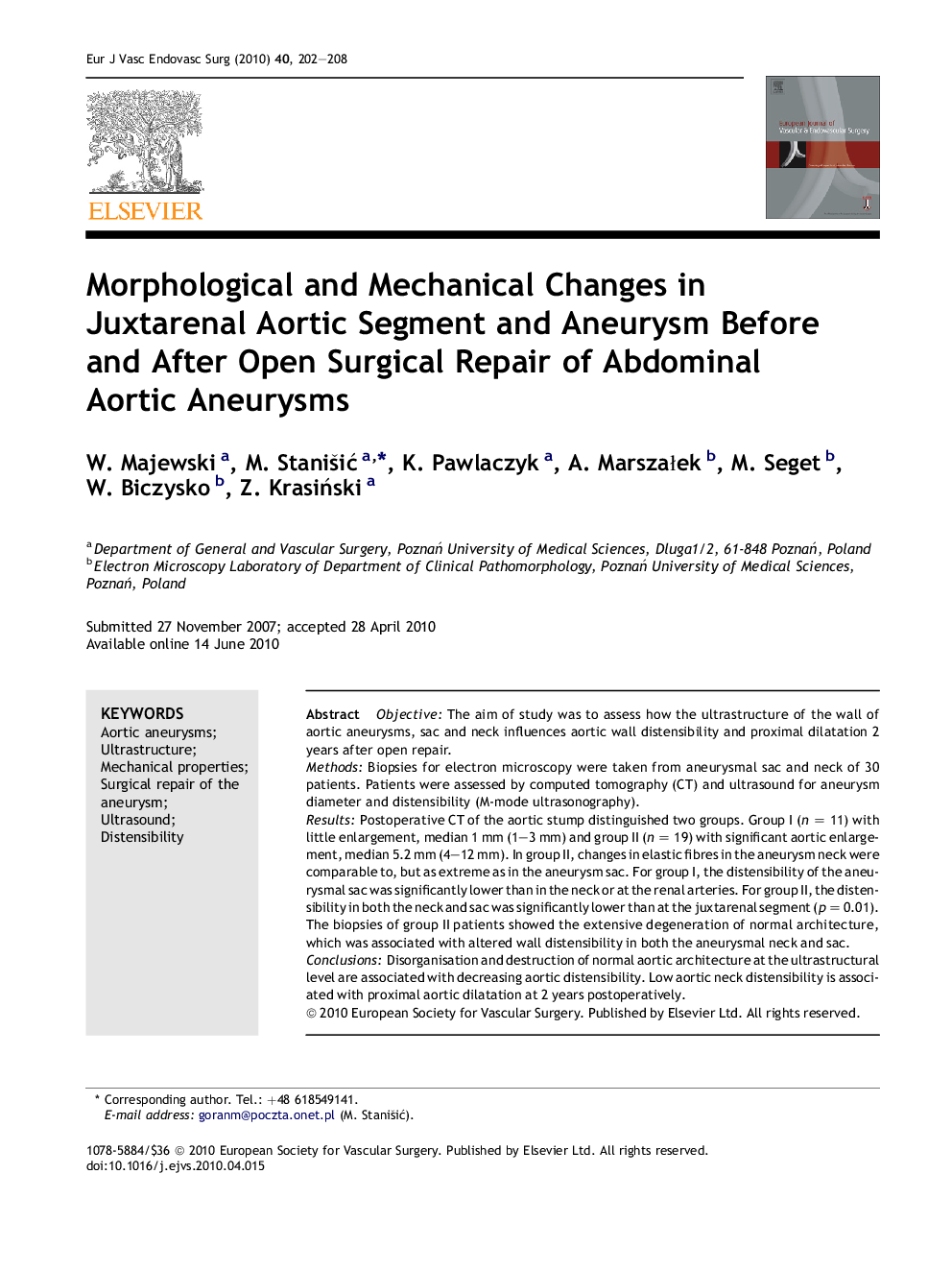| Article ID | Journal | Published Year | Pages | File Type |
|---|---|---|---|---|
| 2913944 | European Journal of Vascular and Endovascular Surgery | 2010 | 7 Pages |
ObjectiveThe aim of study was to assess how the ultrastructure of the wall of aortic aneurysms, sac and neck influences aortic wall distensibility and proximal dilatation 2 years after open repair.MethodsBiopsies for electron microscopy were taken from aneurysmal sac and neck of 30 patients. Patients were assessed by computed tomography (CT) and ultrasound for aneurysm diameter and distensibility (M-mode ultrasonography).ResultsPostoperative CT of the aortic stump distinguished two groups. Group I (n = 11) with little enlargement, median 1 mm (1–3 mm) and group II (n = 19) with significant aortic enlargement, median 5.2 mm (4–12 mm). In group II, changes in elastic fibres in the aneurysm neck were comparable to, but as extreme as in the aneurysm sac. For group I, the distensibility of the aneurysmal sac was significantly lower than in the neck or at the renal arteries. For group II, the distensibility in both the neck and sac was significantly lower than at the juxtarenal segment (p = 0.01). The biopsies of group II patients showed the extensive degeneration of normal architecture, which was associated with altered wall distensibility in both the aneurysmal neck and sac.ConclusionsDisorganisation and destruction of normal aortic architecture at the ultrastructural level are associated with decreasing aortic distensibility. Low aortic neck distensibility is associated with proximal aortic dilatation at 2 years postoperatively.
